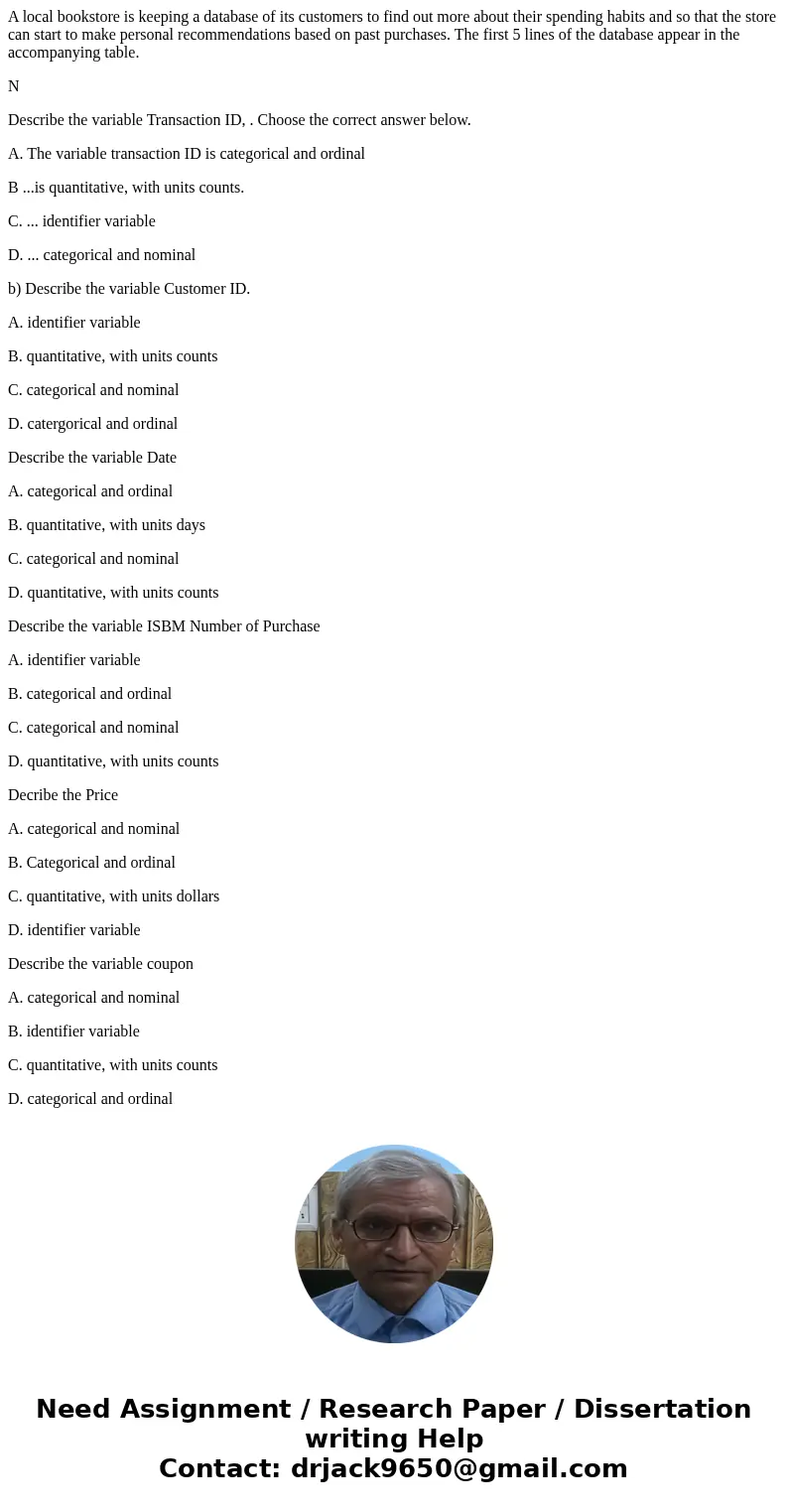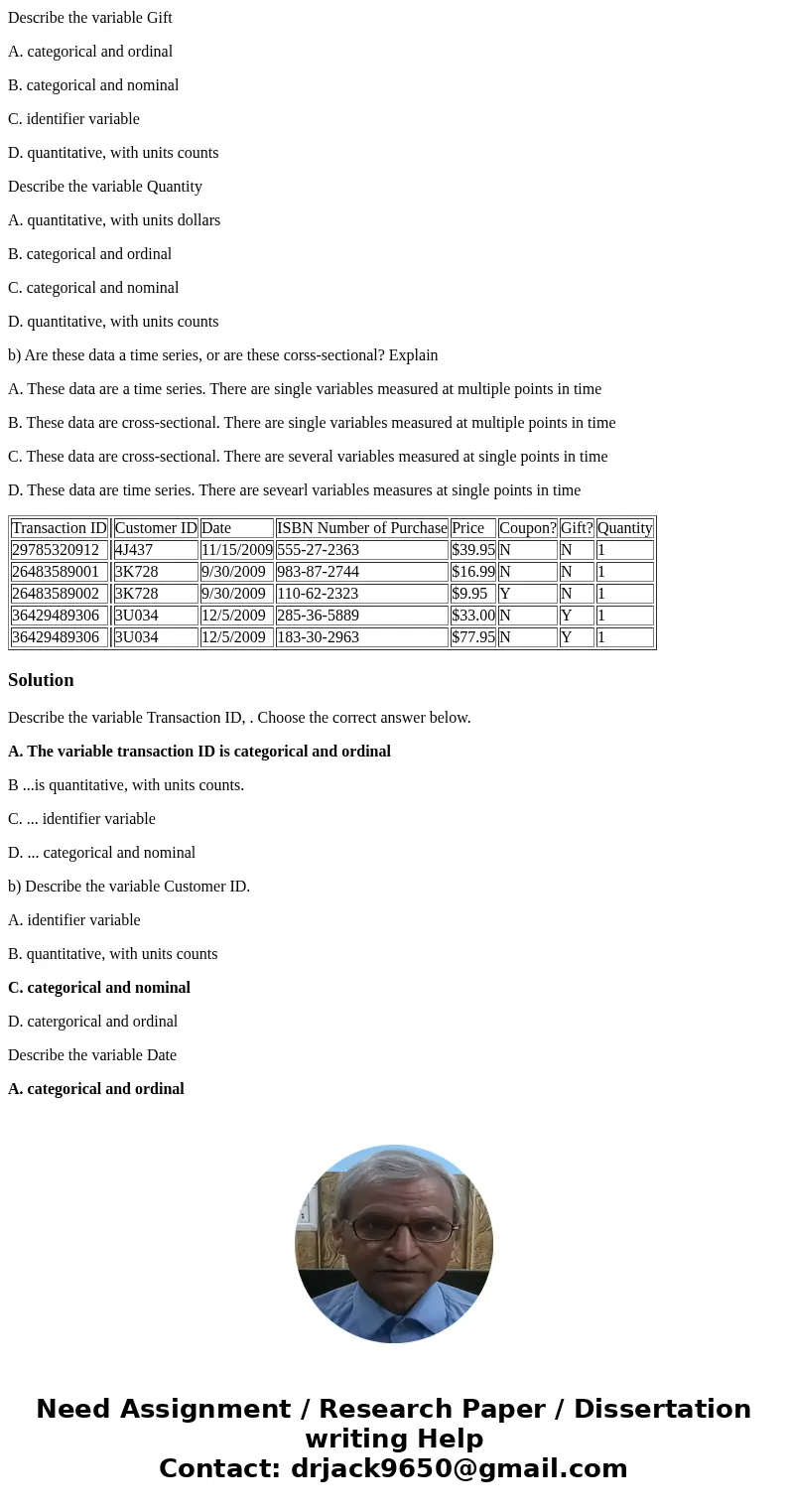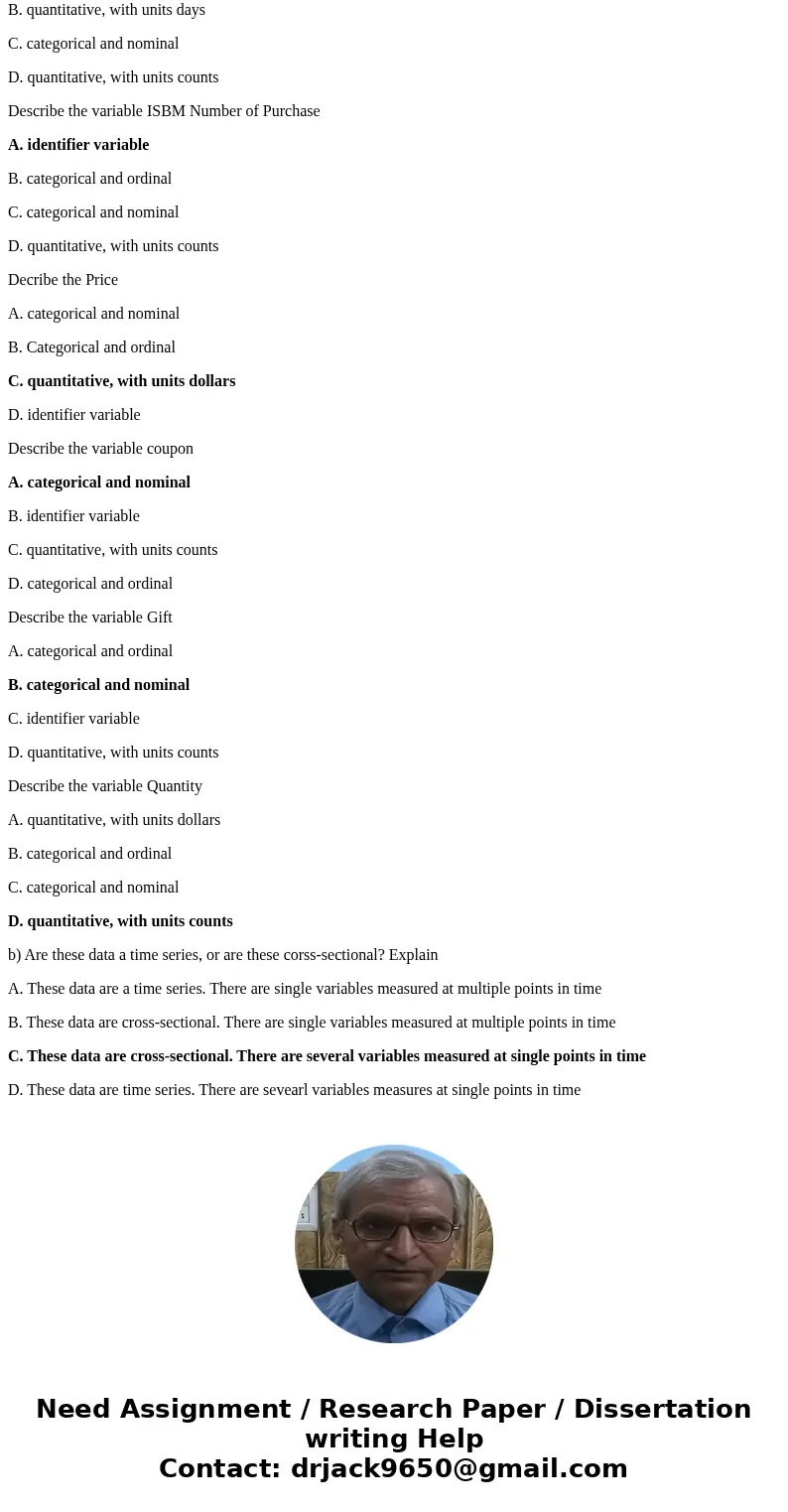A local bookstore is keeping a database of its customers to
A local bookstore is keeping a database of its customers to find out more about their spending habits and so that the store can start to make personal recommendations based on past purchases. The first 5 lines of the database appear in the accompanying table.
N
Describe the variable Transaction ID, . Choose the correct answer below.
A. The variable transaction ID is categorical and ordinal
B ...is quantitative, with units counts.
C. ... identifier variable
D. ... categorical and nominal
b) Describe the variable Customer ID.
A. identifier variable
B. quantitative, with units counts
C. categorical and nominal
D. catergorical and ordinal
Describe the variable Date
A. categorical and ordinal
B. quantitative, with units days
C. categorical and nominal
D. quantitative, with units counts
Describe the variable ISBM Number of Purchase
A. identifier variable
B. categorical and ordinal
C. categorical and nominal
D. quantitative, with units counts
Decribe the Price
A. categorical and nominal
B. Categorical and ordinal
C. quantitative, with units dollars
D. identifier variable
Describe the variable coupon
A. categorical and nominal
B. identifier variable
C. quantitative, with units counts
D. categorical and ordinal
Describe the variable Gift
A. categorical and ordinal
B. categorical and nominal
C. identifier variable
D. quantitative, with units counts
Describe the variable Quantity
A. quantitative, with units dollars
B. categorical and ordinal
C. categorical and nominal
D. quantitative, with units counts
b) Are these data a time series, or are these corss-sectional? Explain
A. These data are a time series. There are single variables measured at multiple points in time
B. These data are cross-sectional. There are single variables measured at multiple points in time
C. These data are cross-sectional. There are several variables measured at single points in time
D. These data are time series. There are sevearl variables measures at single points in time
| Transaction ID | Customer ID | Date | ISBN Number of Purchase | Price | Coupon? | Gift? | Quantity | |
| 29785320912 | 4J437 | 11/15/2009 | 555-27-2363 | $39.95 | N | N | 1 | |
| 26483589001 | 3K728 | 9/30/2009 | 983-87-2744 | $16.99 | N | N | 1 | |
| 26483589002 | 3K728 | 9/30/2009 | 110-62-2323 | $9.95 | Y | N | 1 | |
| 36429489306 | 3U034 | 12/5/2009 | 285-36-5889 | $33.00 | N | Y | 1 | |
| 36429489306 | 3U034 | 12/5/2009 | 183-30-2963 | $77.95 | N | Y | 1 |
Solution
Describe the variable Transaction ID, . Choose the correct answer below.
A. The variable transaction ID is categorical and ordinal
B ...is quantitative, with units counts.
C. ... identifier variable
D. ... categorical and nominal
b) Describe the variable Customer ID.
A. identifier variable
B. quantitative, with units counts
C. categorical and nominal
D. catergorical and ordinal
Describe the variable Date
A. categorical and ordinal
B. quantitative, with units days
C. categorical and nominal
D. quantitative, with units counts
Describe the variable ISBM Number of Purchase
A. identifier variable
B. categorical and ordinal
C. categorical and nominal
D. quantitative, with units counts
Decribe the Price
A. categorical and nominal
B. Categorical and ordinal
C. quantitative, with units dollars
D. identifier variable
Describe the variable coupon
A. categorical and nominal
B. identifier variable
C. quantitative, with units counts
D. categorical and ordinal
Describe the variable Gift
A. categorical and ordinal
B. categorical and nominal
C. identifier variable
D. quantitative, with units counts
Describe the variable Quantity
A. quantitative, with units dollars
B. categorical and ordinal
C. categorical and nominal
D. quantitative, with units counts
b) Are these data a time series, or are these corss-sectional? Explain
A. These data are a time series. There are single variables measured at multiple points in time
B. These data are cross-sectional. There are single variables measured at multiple points in time
C. These data are cross-sectional. There are several variables measured at single points in time
D. These data are time series. There are sevearl variables measures at single points in time



 Homework Sourse
Homework Sourse